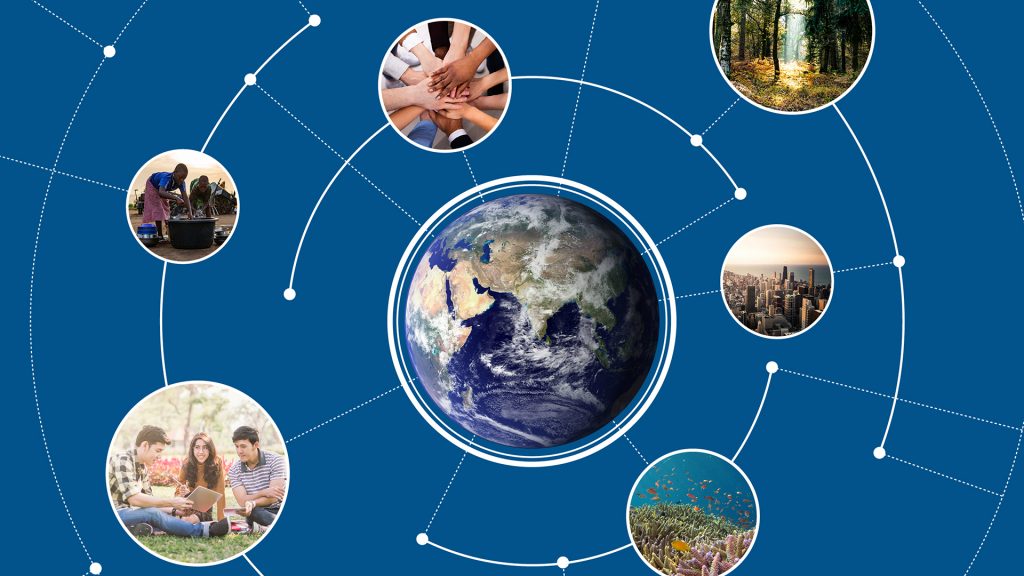Esta web utiliza cookies para que podamos ofrecerte la mejor experiencia de usuario posible. La información de las cookies se almacena en tu navegador y realiza funciones tales como reconocerte cuando vuelves a nuestra web o ayudar a nuestro equipo a comprender qué secciones de la web encuentras más interesantes y útiles.
Accelerating Education for the SDGs: New Higher Education Sector Guidance on Education for Sustainable Development
Description
Institution
Quality Assurance Agency, Advance HE and the UK ESD Advisory Group
Organizations/areas of the university involved
QAA, Advance HE, SOS-UK, Society for the Environment and an Expert advisory group drawn from the universities of Bristol, Cardiff Metropolitan, Edinburgh, Exeter, Gloucester, Keele, Manchester Metropolitan, Nottingham Trent, Plymouth Southampton, St Andrews and the West of England,
Country
UNITED KINGDOM
This major new Guidance document supports universities in incorporating Education for Sustainable Development (ESD) within their curricula and offers context, ideas and examples for staff and students.
This is the second edition of the Quality Assurance Agency for Higher Education (QAA) and Advance HE ESD Guidance for Higher Education Providers, first published in 2014. This UK wide guidance has been prepared by representatives of the HE, business and student communities with expertise in education and sustainable development. A draft version was subject to sector-wide consultation from November 2020 to January 2021. The guidance is intended to be of practical help to all higher education providers working with students and staff to foster their knowledge, understanding and skills in the area of sustainable development. It recognises that there are many ways in which this may be achieved and is not prescriptive about delivery. Instead, it offers many authentic ideas and examples intended to inspire, inform and enable ESD to be introduced and used in the curriculum design process, and for facilitating ESD as central to curricula framework and part of a whole-institution approach. Following the launch in March 2021, QAA and Advance HE, in collaboration with UK universities, are now developing a range of case studies and webinars to further support academic staff in implementing ESD within their curricula, thereby building on the ideas set out in the document in ‘real life’ contexts. This guidance provides examples for those new to ESD and those with expertise looking to expand their consideration of ESD. It is also of value to senior management teams, those with responsibility for quality assurance and enhancement, and staff involved in directing teaching and learning. It may also prove useful to staff responsible for extracurricular activities. The guidance is divided in to four sections, Section 1 provides an introduction to ESD including discussion of the SDGs. Section 2 discusses how to get started with ESD, while recognising the importance of strategic, institution-level commitment. Section 3 focuses on teaching, learning and assessment approaches for ESD. It introduces the key competencies for sustainability, course and module learning outcomes for ESD and guidance about developing learning environments to support ESD. Section 4 provides users with a range of references and resources.
Results and impact measured or expected
The Guidance is designed and developed for the UK and represents a collaboration between the aforementioned UK HE sector agencies, students and university sustainability and education academic experts who compromised the Academic Advisory Group. The Guidance is applicable to any discipline within the 160 UK higher education providers who collectively educate more than 2 million students. It can be used as both a course design reference point and as an advocacy aid for those supporting ESD agendas in their organisation. It was launched in an online event which had over 700 registrations and thus achieved a larger audience than had the launch been a face to face event. In the next year, members of the Advisory Group will survey the adoption of the guidance by institutions. Its importance as a reference point is reinforced by the mandatory consideration of sustainability within all QAA Subject Benchmark Statements produced from 2021 onwards.
Connection with the SDG framework
The Guidance recommends that the SDGs be considered as a system, where action on one goal can have positive or negative impacts on one or more of the other goals. Recognising and balancing these positive and negative feedbacks is an important part of sustainable development. The goals thus provide a context and framing for the four sections of the Guidance. The SDGs are presented as a useful entry point for staff and students interested in incorporating ESD content and challenges in modules, courses and practice. The breadth of the SDGs and the depth of the targets within each goal means that they can resonate with all academic disciplines and subject areas. While individual goals represent an entry point into disciplinary consideration, it is important that educators consider the impacts of action on one goal on the other goals.
Barriers and follow up
QAA and Advance HE readily accepted that the time was right for a revision to the 2014 guidance. Establishing a diverse expert advisory group ensuring appropriate coverage of the key sustainability and pedagogical competencies was achieved fairly easily. Debate within the Advisory Group was lively but a consensus was rapidly achieved on the key changes and relative importance of issues to be addressed in the guidance. The Advisory Group held its first meeting in February 2020 and immediately thereafter all meetings moved online as the pandemic necessitated the abandonment of the planned series of face to face meetings. The group rapidly adapted to an online working model and secure shared documents enabled an iterative development of the document. A small Editing Team ensured coherence and structure of the document. The Guidance was launched in an online event with lively and supportive audience interaction.
Transferability of the initiative
Although produced for UK Higher Education providers the guidance covers issues and provides opportunities than can be transferred to providers in other geographical contexts. The guidance recognises 5 enabling conditions for achieving ESD.
1. ESD objectives, targets and KPIs are part of the institution’s strategic priorities and subsequent strategies and policies.
2. The framing of ESD within the curriculum is included in the validation of new courses and ongoing review of existing courses.
3. ESD is central to the staff and student induction process, as well as staff appraisal and/or promotion criteria.
4. ESD is articulated within quality assurance and enhancement processes.
5. Staff development to enable ESD is fully supported at an institutional level
These arguably are applicable to any institution of higher education and thus are transferable to other HE settings around the world.
Education 4 SDG funciona gracias a WordPress


